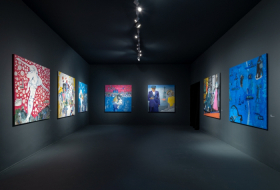No longer. Neuroscientists have a growing arsenal of tools—fMRIs, PET scans, high-density EEGs—to watch the nocturnal brain at work and see how it ticks throughout the sleep cycle. To the surprise and delight of researchers, that’s finally helping explain one of the mind’s most ineffable qualities: creativity.
We’ve all slept on a problem and had it sort itself out by morning. But that’s only a small part of what the brain on nighttime autopilot can do. Paul McCartney famously said that he came up with the melody for “Yesterday” in a dream; Elias Howe, the inventor of the sewing machine, is said to have solved the problem of the machine’s needle when he dreamed of an attack by warriors carrying spears with holes in the tips. “Dreams are just thinking in a different biochemical state,” says Harvard University psychologist Deirdre Barrett, author of The Committee of Sleep. “In the sleep state, the brain thinks much more visually and intuitively.”
When architecture students undergoing functional magnetic resonance imaging (fMRI) brain scans were asked to perform a visual-spatial task—arranging geometric shapes in their heads to see if they could be assembled into a square or a triangle— the right, artistic hemisphere carried the load. When they were given a slightly more creative task—arranging a circle, a C and an 8 in various ways to form a face—the right hemisphere called on the assistance of the left. “The specific regions that are active during the creative process largely depend on the kind of task the person is engaged in,” says Aziz-Zadeh.
Another study at the University of Rome found something similar. With the help of EEGs, investigators tracked communication between hemispheres when subjects were awake, in NREM sleep and in REM. In the waking and NREM states, information traveled mainly from left to right, consistent with the idea that the left brain controls the right. During REM sleep, however, there was no preferred direction. The right can thus come out of the shadows.
Synapses—the cell-to-cell links that serve as the bits of the brain’s operating system—play an important role too. Each brain cell can link to more than just one other, and it would seem that the more connections there are, the better, since that makes for a richer system. That’s indeed true, but only to a point. Too many connections can lead to chaotic free association rather than organized thought. So the brain must periodically clear out the synaptic underbrush—analogous to “running a repair-and-cleaning program on your computer to defrag the hard drive,” says psychologist William Killgore of Harvard Medical School.
The hormone cortisol rises during REM, then helps form new and imaginative ideas from the data that survives the defrag. Cortisol is a stress hormone and tends to fracture memory. It has the same effect when we’re asleep, and Payne believes this encourages the unbinding and rebinding of images that can define dreams. “The brain dislikes fragmentation, so it weaves narratives,” she says. “And that, in turn, gives rise to novel thinking.”
Dopamine is another ingredient in the brain’s secret creative sauce. Harvard psychologist Shelley Carson points out that dopamine levels rise in pleasure centers of the brain both when we’re dreaming and when we’re being creative. This serves as a reward and reinforcement that keeps the dreams—and ideas—flowing.
Controlling the process
As with all other matters scientific, the question of causation comes up. Are we all equally imaginative in our sleep, or do people who are already creative in their waking hours retain that edge at night? Much as it would be nice to think that sleep is a great democratizer, the fact is, creative types may indeed have an advantage around the clock. Psychologist David Watson of the University of Notre Dame tracked 200 subjects over three months and found that those who scored high on creativity scales when they were awake tended to remember their dreams more.
“One reason is that they simply have more vivid and interesting dreams,” he says. “That’s linked to having an active fantasy life; the daytime behavior shades over into the night. This is a case of the rich getting richer.”
That’s not to say the creative middle class can’t aspire to join that metaphorical 1%. The best strategy for remembering dreams is keeping a journal next to your bed, says Watson. Avoiding alcohol and caffeine is also wise, since they scramble the NREM and REM cycles. Barrett’s studies suggest that engaging in some type of pre-bedtime priming—contemplating a problem you’d like to solve—increases the likelihood that sleep will bring some answers. Up to a third of the subjects in one of her sample groups reported that priming had helped them find a solution that had eluded them during the day.None of this guarantees that a good night’s sleep is the panacea for what ails you creatively. But neither does it change the fact that the odds are in your favor. You have problems every day, and you go to bed every night. But even if you don’t think of yourself as creative, your sleeping brain will sometimes prove otherwise.
/Time.com/
More about: #Sleep #creativity
















































